User Ideas / Prospects
Executive Summary:
The Indian engineering job market in 2025 is characterized by significant dynamism, primarily fueled by rapid technological advancements and sustained economic growth. This report provides a comparative analysis of the job market trends for five mainstream engineering branches in India: Civil Engineering, Electrical Engineering, Computer Engineering, Chemical Engineering, and Mechanical Engineering. The purpose of this analysis is to offer strategic insights for professionals navigating this evolving landscape. Key findings indicate that Computer Engineering currently exhibits the strongest growth and demand, largely due to the ongoing digital transformation across industries. Mechanical Engineering also presents substantial opportunities owing to its foundational role in a wide array of sectors. While Civil, Electrical, and Chemical Engineering demonstrate steady growth and demand within their respective domains, the impact of emerging technologies is a critical factor influencing the trajectory of all five branches. The strongest trends are observed in Computer Engineering, driven by the digital revolution, and in Mechanical Engineering, supported by its adaptability across diverse sectors. These trends are primarily attributed to rapid technological advancements in areas like Artificial Intelligence (AI), Machine Learning (ML), and automation, coupled with government initiatives such as Make in India and Skill India, and consistent industrial expansion.
Introduction:
The Indian economy is currently experiencing a phase of rapid expansion, with an increasing emphasis on technological advancement and infrastructure development, which has a direct and significant impact on the engineering sector. Engineering serves as a fundamental pillar of India's progress, driving innovation, the expansion of essential infrastructure, and overall technological progress. This report will focus on five mainstream engineering branches that are crucial to this development: Civil Engineering, which deals with infrastructure and construction; Electrical Engineering, concerned with power and electronics; Computer Engineering, specializing in software and information technology; Chemical Engineering, focused on processes and materials; and Mechanical Engineering, which encompasses design and manufacturing. The primary objective of this report is to provide a comprehensive and data-driven comparative analysis of the job market trends for these five engineering branches within India for the year 2025 and the near future. This analysis aims to equip professionals with the necessary insights to make informed decisions regarding their career paths. The report will cover key aspects for each branch, including the current level of demand, the projected growth rate, the primary industries that are actively hiring, the influence of emerging technologies, the specific skills and specializations that are in high demand, and the typical salary ranges for professionals at different stages of their careers. The information presented in this analysis is derived from a variety of recent industry reports, surveys conducted by job portals and educational institutions, and relevant government statistics
Comparative Analysis of Job Market Trends:
- Demand:
Currently, Computer Engineering and Mechanical Engineering exhibit the highest demand in India in 2025. The demand for Computer Engineering is significantly boosted by the thriving IT sector and the ongoing digital transformation across various industries, with over 82,000 job openings reported 14. Mechanical Engineering also experiences strong demand due to its fundamental role in a wide array of industries, particularly manufacturing, automotive, and aerospace 23. Civil Engineering demonstrates robust demand driven by extensive infrastructure projects 2, while Electrical and Chemical Engineering maintain steady demand across their respective sectors 6. The sheer volume of job openings in Computer Engineering suggests a quantitatively higher current demand compared to the more general descriptions of demand in other engineering fields.
- Projected Growth Rate:
Computer Engineering is projected to have the most significant growth rate in the near future, with an anticipated 22% increase in tech jobs 11and a 21.4% CAGR in the engineering software market 13. Civil Engineering also shows strong growth projections, with a CAGR of 7.8% for the market 1and an annual demand growth of 9% for professionals 2, with some estimates going as high as 25% annually 3. Electrical Engineering is expected to grow at around 5% annually in terms of employment 8, with a notable 12% projected annual growth in the electrical equipment manufacturing market 6. Mechanical Engineering's growth is projected to be in the range of 4-7% 24, while Chemical Engineering is expected to see an approximate annual growth of 8% in demand 19. The consistently higher growth rate projected for Computer Engineering indicates that it will likely continue to generate more new job opportunities compared to the other branches in the coming years.
Key Industries:The primary industries actively hiring professionals vary across the engineering branches. Computer Engineering is heavily concentrated in the IT services sector, software development companies, and the e-commerce industry. Mechanical Engineering has the broadest distribution, with significant hiring in manufacturing, automotive, aerospace, and the energy sector. Civil Engineering is primarily focused on infrastructure and construction projects, with substantial involvement from the government sector. Electrical Engineering sees major hiring in power generation, telecommunications, and the automation industry. Chemical Engineering is vital for the chemical manufacturing and processing industries, including pharmaceuticals and the energy sector. The concentration of Computer Engineering in the rapidly expanding technology sector contrasts with the wider distribution of the other branches, suggesting different sensitivities to sector-specific economic fluctuations.
- Engineering Branch and Their Key Hiring Industries
Civil:-
Civil Services, Private Construction Firms, Indian Armed Forces, Public Sector Undertakings (PSUs), Infrastructure Development Companies
Electrical:-
Power Generation, Telecommunications, Automation & Robotics, Semiconductors, Renewable Energy, Electrical Equipment Manufacturing, Electronics Manufacturing
Computer:-
IT Services, Software Development, E-commerce, Artificial Intelligence and Machine Learning Companies, Product Development Companies, Cybersecurity Firms
Chemical:-
Oil & Gas, Chemical Manufacturing, Pharmaceuticals, Food Processing, Biotechnology, Petroleum, Fertilizer, Power and Energy, Water Treatment, FMCG, Air Conditioning and Refrigeration
Mechanical:-
Manufacturing, Automotive, Aerospace, Energy, Construction, Healthcare, Electronics, Pharmaceuticals, Heavy Machinery, Power Generation, Chemical Processing, Food and Beverage, Metals, Industrial Equipment, Machinery Manufacturing, Automation Systems, Consulting, Project Management
- Required Skills: While core engineering principles remain fundamental, all five branches increasingly demand digital literacy and skills related to emerging technologies. Computer Engineering professionals are expected to possess strong programming skills, expertise in cloud computing platforms, and knowledge of AI and ML tools. Mechanical Engineering requires proficiency in CAD software, understanding of automation and robotics, and knowledge of sustainable design principles. Civil Engineering professionals need skills in BIM software, knowledge of smart infrastructure technologies, and an understanding of sustainable construction practices. Electrical Engineering demands expertise in renewable energy systems, smart grid technologies, and embedded systems design. Chemical Engineering is focusing on skills related to process optimization, sustainable chemical processes, and biotechnology applications. This common need for digital skills across all engineering disciplines highlights a fundamental shift in the profession, where traditional domain expertise must be complemented by technological proficiency.
- Salary Expectations: In terms of salary expectations, Computer Engineering generally offers the highest compensation, particularly at the entry and mid-levels, owing to the intense demand within the rapidly expanding IT sector. Entry-level salaries in Computer Engineering can reach up to 11.8 LPA 11, and mid-level professionals often earn in excess of 10 LPA 14. Mechanical and Chemical Engineering also provide competitive salary packages, especially for mid-level and experienced professionals, with potential earnings reaching up to 12 LPA and 20+ LPA, respectively 21. Civil and Electrical Engineering offer good salary prospects as well, with entry-level positions ranging from 3-6 LPA and 4-6 LPA, respectively 8, and opportunities for higher earnings with specialization and increased experience. The salary premium observed in Computer Engineering reflects the intense competition for skilled talent within the rapidly growing technology industry in India.
- Typical Salary Ranges (LPA) by Engineering Branch and Experience Level
Civil:-
Entry Level ( 0-3 Years of Enperience):- 3.6 - 5.0
Mid Level( 3-7 Years of Enperience):- 5.0 - 7.5
Highly Experience Level ( 7+ Years of Experience):- 7.5 - 15 +
Electrical:-
Entry Level ( 0-3 Years of Enperience):- 3.0 - 4.5
Mid Level( 3-7 Years of Enperience):- 4.5 - 9.0
Highly Experience Level ( 7+ Years of Experience):-8.0 - 12+
Computer:-
Entry Level ( 0-3 Years of Enperience):- 6.0 - 11.8
Mid Level( 3-7 Years of Enperience):- 8.0 - 15.0
Highly Experience Level ( 7+ Years of Experience):-12.0 - 25+
Chemical:-
Entry Level ( 0-3 Years of Enperience):- 3.0 - 8.0
Mid Level( 3-7 Years of Enperience):- 5.0 - 10.0
Highly Experience Level ( 7+ Years of Experience):- 8.0 - 20+
Mechanical:-
Entry Level ( 0-3 Years of Enperience):- 3.0 - 6.0
Mid Level( 3-7 Years of Enperience):- 6.0 - 12.0
Highly Experience Level ( 7+ Years of Experience):- 12.0 - 20+
Comparative Analysis of Job Market Trends Across Mainstream Engineering Fields
1. Introduction
The engineering job market has undergone significant changes over the last five years, influenced by technological advancements, industry demand, and regional economic factors. This report provides a comparative analysis of job trends across key engineering disciplines globally and in India, backed by industry reports and expert analysis.
2. Overview of Engineering Fields Considered
Mechanical Engineering
Civil Engineering
Electrical Engineering
Electronics Engineering
Computer Science & Software Engineering
Chemical Engineering
Aerospace Engineering
3. Job Growth Trends (2019-2024)
Engineering FieldGlobal Job Growth (%)India Job Growth (%)Key Drivers
Mechanical +5% +6% Automation, Robotics, Renewable Energy (Source: World Economic Forum, Engineering Workforce Report 2023) Civil +3% +4% Urbanization, Smart Cities, Infrastructure Development (Source: India Infrastructure Report 2023) Electrical +4% +5% Power Grids, Renewable Energy, Electric Vehicles (EVs) (Source: International Energy Agency, Global Energy Outlook 2024) Electronics +2% +3% Consumer Electronics, Semiconductor Industry (Source: Semiconductor Industry Association 2023) Computer Science +12% +15% AI, Cloud Computing, Cybersecurity, Software Development (Source: Gartner IT Jobs Report 2024) Chemical +1% +2% Sustainable Materials, Green Chemistry, Pharmaceuticals (Source: Global Chemical Industry Report 2023) Aerospace +6% +7% Space Exploration, Defense, Private Aviation Growth (Source: NASA & ISRO Employment Reports 2023) 4. Key Findings & Comparative Analysis 4.1 Computer Science & Software Engineering
Highest Growth Rate due to demand in AI, ML, cybersecurity, and cloud technologies. (Source: McKinsey Digital Workforce Report 2024)
Remote Work Flexibility allows companies to hire globally, increasing competition.
India as an IT Hub has significantly contributed to its rapid job market expansion. (Source: NASSCOM India IT Jobs Report 2023)
4.2 Mechanical, Electrical, and Civil Engineering
Steady Growth but not as exponential as software fields. (Source: Bureau of Labor Statistics, Engineering Job Outlook 2024)
Automation & AI Integration is reshaping traditional roles.
Renewable Energy & EVs boosting opportunities in Electrical and Mechanical fields.
Smart Cities & Infrastructure Growth supporting Civil Engineering job demand. (Source: World Bank Infrastructure Investment Report 2023)
4.3 Electronics & Chemical Engineering
Slower Growth due to automation reducing manual design and manufacturing roles.
Semiconductor Industry Boom creating niche opportunities in Electronics. (Source: Semiconductor Industry Association 2023)
Sustainability Focus in Chemical Engineering opening new doors in green chemistry. (Source: Global Chemical Engineering Outlook 2024)
4.4 Aerospace Engineering
Stable to Growing Market with increased investments in private space exploration (SpaceX, ISRO, Blue Origin, etc.).
Defense & Commercial Aviation driving demand. (Source: Boeing & Airbus Industry Reports 2023)
5. Future Prospects & Emerging Trends
Interdisciplinary Skills: Engineers combining traditional skills with AI, IoT, and robotics will have a competitive edge. (Source: Harvard Business Review 2024)
Sustainability & Green Engineering: High demand in renewable energy, electric vehicles, and waste management.
Space & Defense Sector Expansion: Increasing aerospace engineering opportunities.
Upskilling & Reskilling: Engineers must adapt to digital transformations to remain relevant. (Source: LinkedIn Workforce Report 2023)
6. Conclusion
While Computer Science & Software Engineering leads in job market expansion, other engineering fields remain essential, with opportunities evolving due to technological shifts. Engineers who integrate software, automation, and sustainability into their expertise will have higher employability in the future.
Sources & References:
World Economic Forum, Engineering Workforce Report 2023
Bureau of Labor Statistics, Engineering Job Outlook 2024
NASSCOM India IT Jobs Report 2023
McKinsey Digital Workforce Report 2024
Semiconductor Industry Association 2023
Global Chemical Industry Report 2023
India Infrastructure Report 2023
International Energy Agency, Global Energy Outlook 2024
Boeing & Airbus Industry Reports 2023
NASA & ISRO Employment Reports 2023
Harvard Business Review 2024
LinkedIn Workforce Report 2023
This report provides a structured comparison of engineering job markets. Let me know if you need more detailed insights or additional data points!
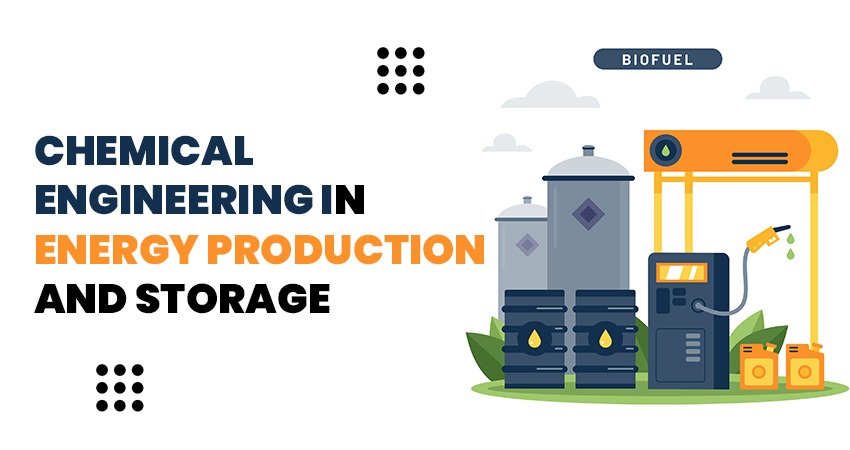
Energy is the backbone of modern society. Every sector, from transportation to technology, relies on it. Yet, producing and storing energy efficiently is a constant challenge. This is where chemical engineering steps in. It bridges science and technology to create solutions for energy production and storage.
Energy production is complex. It entails converting raw
materials such as coal, natural gas, or biomass into usable energy. Chemical Engineers make sure this process is efficient and sustainable.
One major contribution lies in the development of cleaner
fuels. Traditional fuels such as coal emit harmful emissions. Chemical
engineers are working to reduce these emissions through innovative techniques.
They design systems that capture carbon dioxide before it enters the
atmosphere.
Chemical engineers are excellent in another area:
renewable energy. To enhance efficiency, wind and solar energy rely on advanced
materials, and chemical engineers develop these. For instance, they create a
better coating for the solar panels so that more sunlight is captured.
Hydrogen energy is also getting attention. Hydrogen is a
clean energy source, but its production can be difficult. Chemical engineers
develop processes to make hydrogen production more efficient. That includes
innovations in electrolysis and fuel cells.
The
Role in Energy Storage
Energy production is just one side of the coin. The other
side is storage. Renewable energy systems cannot work without proper storage.
Flow Batteries: Flow batteries are large-scale batteries,
primarily ideal for storing renewable energy. Chemical engineers design fluids
that store energy in these systems.
Another focus is thermal energy storage. It involves
storing heat from the sun or industrial processes. Chemical engineers develop
materials that retain this heat for long periods. These systems are very
important in balancing energy supply and demand.
Sustainability
and Environmental Impact
Chemical engineers are at the forefront of sustainable
energy solutions. They focus on reducing waste and minimizing environmental
impact.
Recycling is another input of chemical engineering.
Valuable materials in these batteries and panels are being reclaimed by
chemical engineers. Sustainability for energy systems follows this recycling
strategy.
Future
Prospects in Energy Engineering
Chemical engineering holds the key to the future of
energy. Each day sees a new emergence of technology. These technologies, made
practical, have been driven into reality by chemical engineers.
AI is the recent addition in the energy systems. The
chemical engineers optimize the process through AI. The efficiencies are
enhanced with reduced cost.
Another breakthrough is nanotechnology. This is working at
the atomic level with materials. Chemical engineers utilize nanotechnology in
developing improved catalysts. The catalysts speed up chemical reactions in the
generation of energy.
Fusion energy is on the horizon, too. It imitates the
generation of energy by the sun. Chemical engineers are striving to make this
energy a reality. It can generate unlimited clean energy in the future.
Why
Engineers Heaven is Your Best Resource
If you’re passionate about chemical engineering, visit the og. This website is a hub for engineers and aspiring professionals. It offers valuable resources for understanding energy systems and beyond.
Engineer’s Heavenprovides easy-to-read articles on cutting-edge technologies. It also offers practical tools for students and professionals. Whether you’re researching fuel cells or battery storage, this site has you covered. It also links you to the world community of engineers. Share your ideas with other engineers, learn from the best minds, and enjoy your life on the go with Engineers Heaven as more than just a resource.
(Disclaimer: This statistics could be different in
different part of World and Different timeline. this statistics has been
generated based on data available till 2025 or relavant time span.)
Chemical engineering and biotechnology are two branches that when interlinked are
responsible for a lot of innovation in several sectors. It results in the
creation of sustainable processes and new products to solve problems affecting
the world today.
Application of
Biotechnology in Chemical Engineering
Chemical
engineering has been traditionally defined as the use of chemical processes to
convert materials of low value into products of high value. Biotechnology
brings biological entities into this framework using living organisms or parts
thereof in the development or alteration of products. This integration helps in
improvement of the production processes and thus makes production to be more
efficient and sustainable.
Use in different
sectors
The
collaboration between biotechnology and chemical engineering has led to notable
innovations across multiple sectors:
●
Pharmaceuticals: Advanced product development techniques advanced in
biotechnology have made it easier to synthesize and develop drugs such as
vaccines and therapeutic proteins; this is because with the advancement; side
effects of many drugs are highly minimized.
●
Agriculture: Biotechnology has enhanced agriculture by producing bio
based fertilizers and pest resistant crops have portrayed better yield with
inferior effects on the Environment.
●
Energy: Biomass based biofuels provide renewable energy solutions to
the existing problems of excessive use of fossil fuels and emissions of
greenhouse gases.
●
Environmental Protection: Bioremediation technology includes the use
of microorganisms, which help in remediation of polluted areas, or the
environment.
Educational
Pathways
Thanks
to this approach, academic institutions have developed programs that combine
chemical engineering and biotechnology. For example, the University of
Cambridge has a program that links these fields to equip students to design
environmentally friendly methods and goods.
Professional
Development
Some
of these professional bodies include; the American Institute of Chemical
Engineer who offer courses and programs to enhance the knowledge on
biotechnology. They are specifically designed for chemical engineers who are
involved in design, operation or support roles, to enable them to incorporate
Biotechnological concepts in their work.
Challenges and
Considerations
While
the integration of biotechnology into chemical engineering offers numerous
benefits, it also presents challenges:
- Technical Complexity: The
integration of biological and chemical processes involve the understanding
of two different fields hence a challenge in learning for the
professionals.
- Regulatory Hurdles: Most
biotechnological products attract regulatory control under which various
standards and guidelines have to be met.
- Ethical Concerns: Biological
systems’ manipulation is an area that has ethical issues that need to be
answered to have the public accept the technology.
Future Prospects
The
convergence of biotechnology and chemical engineering is poised to drive future
innovations:
●
Personalized Medicine: It might result in the development of the
targeted therapy that will depend on the patient’s genetic makeup, increasing
effectiveness and decreasing side effects.
●
Sustainable Manufacturing: The examples of bio-based materials and
processes are that green manufacturing techniques can be achieved to reduce
environmental impacts.
●
Food Security: Scholars argue that biotechnological intervention
enhances crop productivity and nutritional quality, hence promoting food
security.
Conclusion
Biotechnology
as a subdiscipline of chemical engineering is an innovative concept that has
been developed to meet modern needs in different fields. The integration of
design and management principles allows professionals to create new solutions
for sustainable development in society.
For
those who want to learn more about this area of study, there are forums such as
Engineer’s Heaven where engineers come to share information, opportunities and
work on new projects. Membership in such networks can be good for gaining some
useful information and experience.
(Disclaimer: This
statistics could be different in different part of World and Different
timeline. this statistics has been generated based on data available till 2024
or relavant time span.)
.jpeg) The environment we live in today would be considered a wonder of the modern world. From the tallest building to the most advanced communication gadgets, from the most sophisticated health care equipment to the most efficient transport systems, Engineering is the unseen driving force behind the things we see. But this immense discipline is anything but homogeneous. It is divided into many subcategories, each dealing with different issues. Today, let’s explore the “Magnificent Five,” the first five important engineering concepts that form the groundwork of engineering.
The environment we live in today would be considered a wonder of the modern world. From the tallest building to the most advanced communication gadgets, from the most sophisticated health care equipment to the most efficient transport systems, Engineering is the unseen driving force behind the things we see. But this immense discipline is anything but homogeneous. It is divided into many subcategories, each dealing with different issues. Today, let’s explore the “Magnificent Five,” the first five important engineering concepts that form the groundwork of engineering.
1. Civil Engineering: Constructing the Framework of Society
Suppose there were no bridges to unite people, no dams controlling the flow of water, and buildings that would house people. This is the domain of Civil Engineering, the people who design and create our world. They plan, build, and even repair the infrastructure that forms the basis of our societies. Civil engineers design the basics of a functioning society: roads and bridges, transportation systems, and water treatment plants.
2. Mechanical Engineering: The Mechanics of Motion
Have you ever asked yourself how a car engine starts or how a robot arm moves with great accuracy? They are mechanical engineers, aren’t they? They are the designers of movement, constructing and creating objects of every description. Whether it is the micro gears of a wristwatch or the large turbines that generate electricity, Mechanical Engineering know how forces and movements can be used to create these wonders.
3. Electrical Engineering: Powering Our World
Try to picture life without electricity. No light, no communication, no electricity, no facilities. Electrical Engineering field`s engineers are the magicians that people do not see, but they keep on managing the flow of electrons in our lives. They conceive, create, and sustain electrical systems, at the micro level of the tiny circuits in a computer chip and at the macro level of the power distribution networks for cities. Their expertise covers the whole spectrum of power generation and transmission, electronics, and telecommunication.
4. Chemical Engineering: Turning the Natural Resources into the Products We Use Daily
Consider the range of goods we consume every day, starting with essential medications and ending with the plastic containers for our drinks. Petroleum, gas, and chemicals are the ingredients that Chemical Engineering turn into the products that enhance our lives; they are the modern-day alchemists. They plan and manage industrial operations; they are concerned with safety, productivity, and environmental impact within the food industry, the oil industry, and many other industries.
5. Industrial Engineering: The improvement of systems for efficiency
This is because, unlike other engineers who mainly design components of a system, Industrial Engineering look more into optimization. They assess and optimize work methods, structures, and procedures for the achievement of the most effective results. Industrial engineers are involved in everything from arranging the physical layout of factories to managing the flow of goods and services in all sectors of the economy.
Engineer's Heaven: Your Gateway to the Engineering Universe
This is just a glimpse of the whole wide world of these five major branches of engineering disciplines. Each one of them has a number of subcategories that embrace a wide range of topics and reflect the abilities of the participants. If you want to know more about engineering, then go to Engineer’s Heaven This site is a one-stop shop for articles, tutorials, projects, and advice for anyone interested in becoming an engineer. So whether you are an experienced engineer or a student interested in the subject, Engineer’s Heaven is your starting point into the expansive world of engineering!
The Magnificent Five are just the tip of the iceberg. Engineering is a rapidly developing field with new branches created to address the needs of the future world. Therefore, go further, investigate, and find the engineering area that will make you passionate! Still, the future is in the talented brains of the young engineers of the future, or the engineers of tomorrow.
In recent past years world have seen very fast paced engineering innovation how ever innovation happened into very particular engineering fields weather some very crucial engineering fields has been overlooked. here just some reference that i think overlooked Engineering fields where innovation is urgently needed but often overlooked with some examples and hypothesis.
- Missed Innovation Example: Aging infrastructure (roads, bridges, dams) in many developed and developing nations remains outdated and unsafe. Technologies for sustainable, earthquake-resistant buildings or smart urban infrastructure (integrated with IoT) are underdeveloped in many regions.
- Need for Innovation:
- Smart cities with energy-efficient, sustainable infrastructure.
- Green construction technologies that reduce the environmental impact of building materials.
- Resilient infrastructure to withstand climate change-induced challenges such as flooding and extreme weather.
- Consequences:
- Deteriorating infrastructure, leading to increased maintenance costs, accidents, and failures (e.g., bridge collapses, unsafe buildings).
- Inadequate urban planning results in traffic congestion, pollution, and poor living conditions.
- Lack of sustainable and resilient construction exacerbates the impact of natural disasters like earthquakes, floods, and hurricanes.
- Missed Innovation Example: Despite growing food insecurity, many areas lack investment in precision farming technologies, such as automated irrigation systems or drones for crop monitoring. Developing countries, in particular, have missed the opportunity to advance farming practices that could increase food production with limited resources.
- Need for Innovation:
- Automation in agriculture: robotics and AI-driven machines for planting, harvesting, and monitoring crops.
- Water-efficient farming: innovative irrigation technologies to maximize water usage in drought-prone areas.
- Climate-resilient agriculture: designing farming systems that can withstand changing weather patterns and environmental stressors.
- Consequences:
- Increased food insecurity and reduced agricultural productivity due to inefficient farming practices.
- Overuse of water and land resources leading to soil degradation, deforestation, and biodiversity loss.
- Vulnerability to climate change as farming systems are not equipped to handle changing weather patterns and environmental stresses.
- Missed Innovation Example: The management of wastewater and air pollution is still suboptimal in many urban areas, especially in developing countries. Technologies for efficient water recycling, waste-to-energy plants, or air purification systems have not been widely adopted, even though they are needed to fight pollution and climate change.
- Need for Innovation:
- Water treatment systems: advanced filtration and purification technologies to ensure clean water supplies.
- Sustainable waste management: converting waste into renewable energy sources or biodegradable materials.
- Air quality improvement: scalable technologies to reduce carbon emissions and particulate matter in urban environments.
- Consequences:
- Worsening pollution levels (water, air, and soil), leading to public health crises such as respiratory diseases and contaminated drinking water.
- Insufficient waste management leads to increased landfills, environmental degradation, and lost opportunities for recycling or energy recovery.
- Poor climate resilience exacerbates the effects of climate change, such as rising sea levels, extreme weather events, and global warming.
- Missed Innovation Example: Mining practices in many countries continue to rely on traditional, destructive methods that cause significant environmental harm. Technologies for more sustainable resource extraction, such as using bio-leaching or automated mining systems, have not been fully implemented.
- Need for Innovation:
- Sustainable mining: reduced environmental impact and more efficient resource extraction processes.
- Mineral recycling technologies: reclaiming valuable materials from industrial waste.
- Energy-efficient smelting and refining processes to reduce emissions and lower the energy consumption in metallurgical operations.
- Consequences:
- Unsustainable mining practices result in environmental destruction, including deforestation, water contamination, and habitat loss.
- Depletion of non-renewable resources without the development of more sustainable extraction or recycling technologies.
- Increased carbon emissions and energy waste in metallurgical processes due to outdated technologies.
- Missed Innovation Example: Public transportation systems in many cities remain outdated, underfunded, and inefficient. The integration of electric buses, autonomous vehicles, or hyperloop systems is still rare, even though these technologies could significantly reduce urban congestion and carbon emissions.
- Need for Innovation:
- Autonomous transport systems: self-driving cars and public transportation that reduces traffic accidents and increases efficiency.
- Electric and sustainable transportation: expansion of electric vehicle infrastructure (charging stations, smart grids) and the use of green energy in transportation networks.
- High-speed rail and hyperloop: developing rapid, sustainable intercity transportation systems.
- Consequences:
- Growing urban congestion and traffic-related air pollution, contributing to public health issues and economic losses.
- Increased reliance on fossil fuels due to inadequate development of electric and sustainable transportation systems, worsening climate change.
- Lack of effective public transportation results in social inequality, as low-income populations suffer from limited access to affordable transport.
- Missed Innovation Example: In many regions, especially in developing countries, water distribution systems are inefficient, leading to significant water loss through leaks. Additionally, technologies for drought management, such as large-scale water desalination or smart water grids, are still underdeveloped.
- Need for Innovation:
- Smart water management systems: sensors, AI, and IoT-based systems that optimize water distribution and reduce wastage.
- Desalination technologies: energy-efficient systems for converting seawater into freshwater.
- Flood prevention: designing advanced flood management systems to control and mitigate urban flooding caused by climate change.
- Consequences:
- Water scarcity and inefficient use of water resources, particularly in drought-prone regions, leading to social unrest and economic disruption.
- Urban flooding and poor stormwater management causing property damage, displacement, and increased mortality rates in vulnerable areas.
- Insufficient access to clean water, contributing to waterborne diseases and exacerbating public health challenges in developing regions.
- Missed Innovation Example: The textile industry is one of the most resource-intensive sectors, yet innovations in sustainable fabrics and environmentally friendly production processes are still limited. Fast fashion continues to contribute to significant waste and pollution.
- Need for Innovation:
- Eco-friendly textiles: developing biodegradable or recyclable fabrics that reduce environmental impact.
- Waterless dyeing technologies: reducing the massive water consumption and chemical use in fabric production.
- Circular textile economy: designing clothes that are easy to recycle or repurpose, reducing textile waste in landfills.
- Consequences:
- Massive environmental pollution due to toxic chemicals used in dyeing processes and large-scale textile waste from fast fashion.
- Over-exploitation of natural resources, such as water and cotton, leading to ecological degradation.
- Missed opportunities for a circular economy in the textile sector, contributing to a growing waste crisis as millions of tons of textiles are sent to landfills each year.
- Missed Innovation Example: In many regions, especially developing countries, there is a lack of affordable medical devices or prosthetics that are accessible to those in need. Technologies for low-cost, 3D-printed medical devices could revolutionize healthcare but remain underdeveloped in underserved markets.
- Need for Innovation:
- Affordable diagnostics: low-cost medical imaging and diagnostic devices for remote or low-income areas.
- Wearable health tech: biosensors and smart devices that monitor health conditions in real time.
- 3D-printed prosthetics and implants: affordable and customizable solutions for those who need prosthetic limbs or medical implants.
- Consequences:
- Lack of affordable, accessible medical technologies results in unequal access to healthcare, particularly in low-income regions.
- Missed opportunities to develop life-saving devices or treatments, such as affordable prosthetics or advanced diagnostic tools, which could improve quality of life.
- Overburdened healthcare systems, unable to cope with increasing demand for effective, low-cost medical solutions.
- Missed Innovation Example: The production of plastics and other petroleum-based chemicals remains largely unsustainable, contributing to massive environmental degradation. Innovations in biodegradable plastics or carbon capture technologies in chemical processes are still insufficiently developed.
- Need for Innovation:
- Green chemistry: developing sustainable processes for producing chemicals with minimal environmental impact.
- Carbon capture and utilization: technologies to capture CO₂ emissions from chemical plants and repurpose them.
- Biodegradable materials: alternatives to plastics and other harmful materials, reducing pollution and improving waste management.
- Consequences:
- Continued reliance on non-biodegradable plastics and harmful chemicals contributes to environmental degradation, particularly ocean pollution and microplastic accumulation.
- Higher levels of industrial emissions, leading to global warming and severe health impacts due to air pollution.
- Missed opportunities for developing sustainable chemical processes, hindering progress toward reducing the carbon footprint of industries.
- Missed Innovation Example: Although there is global recognition of the need for clean energy, many regions continue to rely on outdated, fossil-fuel-based energy systems. Innovations in energy storage, grid management, and renewable energy infrastructure are often underfunded or underdeveloped in critical areas.
- Need for Innovation:
- Energy storage solutions: efficient batteries and storage technologies to support renewable energy use.
- Smart grids: intelligent, flexible energy distribution systems to accommodate renewable sources like solar and wind.
- Sustainable energy generation: scaling up of renewable energy projects, especially in regions heavily dependent on coal or oil.
- Consequences:
- Continued dependence on fossil fuels results in worsening climate change, environmental degradation, and geopolitical conflicts over oil and gas resources.
- Energy poverty in remote or underdeveloped regions due to a lack of innovation in affordable and decentralized renewable energy systems.
- Unstable energy grids that cannot integrate renewable energy sources efficiently, leading to blackouts and unreliable energy supplies.
Overall Societal and Environmental Impact
- Economic stagnation: Missed engineering innovation leads to inefficiencies, higher costs, and lost economic opportunities in key industries such as agriculture, manufacturing, and energy.
- Social inequality: Uneven access to modern technologies and solutions disproportionately affects low-income populations, creating deeper societal divides.
- Environmental degradation: The lack of sustainable technologies exacerbates issues such as climate change, resource depletion, and biodiversity loss, threatening global ecosystems and the well-being of future generations.
By missing innovations in these critical engineering fields, society risks falling behind on addressing some of the most pressing challenges of our time, from food security and climate change to health access and sustainable infrastructure. These areas deserve greater attention, investment, and cross-disciplinary collaboration to drive the necessary changes.
if you are interested in possible cause and solution of this issue follow the link below for related article.
Chemical engineering involves the application of chemistry, physics, and biology to produce materials and energy.
1. Alkali Production (1800 BCE)- Purpose: Used in ancient Egypt for soap making.
- Category: Industrial chemistry.
- Inventor: Nicolas Leblanc.
- Purpose: Industrial production of sodium carbonate (soda ash), used in glass and soap manufacturing.
- Category: Chemical process.
- Purpose: Separation of crude oil into components, leading to the modern petroleum industry.
- Category: Petrochemical.
- Inventor: Fritz Haber.
- Purpose: Industrial production of ammonia for fertilizers, revolutionizing agriculture.
- Category: Chemical process.
- Inventors: Reginald Gibson and Eric Fawcett.
- Purpose: One of the most commonly used plastics, essential in packaging and manufacturing.
- Category: Polymer chemistry.
- Inventor: Wallace Carothers (DuPont).
- Purpose: The first synthetic fiber, widely used in textiles and industry.
- Category: Polymer chemistry.
- Purpose: Improved process for refining petroleum into fuels and chemicals.
- Category: Petrochemical.
- Inventors: Herbert Boyer and Stanley Cohen.
- Purpose: Pioneering genetic engineering method for producing pharmaceuticals like insulin.
- Category: Biochemical engineering.
- Inventor: John Goodenough, Stanley Whittingham, Akira Yoshino.
- Purpose: Rechargeable batteries used in portable electronics and electric vehicles.
- Category: Electrochemical.
how life would be impacted without engineers from various specialized fields
- Infrastructure: Civil engineers design, build, and maintain essential infrastructure like roads, bridges, dams, and buildings. Without them, our transportation networks would be rudimentary, buildings less safe, and urban planning chaotic.
- Water Resources: Civil engineers also handle water supply and sanitation systems. Without them, clean water would be scarce, and sanitation could be a major public health crisis.
- Urban Development: City planning and the development of sustainable communities would be hindered, leading to overcrowded and poorly organized living spaces.
- Machinery and Automation: Mechanical engineers design and develop machines used in industries, transport, and everyday life. Without them, there would be no cars, trains, or airplanes, and industrial processes would be inefficient and labor-intensive.
- Energy Systems: Mechanical engineers also work on power generation systems like turbines and engines. Without them, our ability to generate and efficiently use energy would be severely limited.
- Consumer Products: From home appliances to fitness equipment, many everyday items would be unavailable or far less effective.
- Power Generation and Distribution: Electrical engineers design and maintain the systems that generate and distribute electricity. Without them, we’d lack reliable power, leading to a return to pre-electricity lifestyles.
- Communication Systems: Electronics engineers develop the technology behind phones, computers, and the internet. Without their work, global communication would be nearly impossible.
- Automation and Control Systems: Modern factories and homes rely on automation for efficiency. Without these engineers, production and daily life would be far less efficient.
- Computing Devices: Computer engineers are behind the development of hardware and software that powers computers, smartphones, and other digital devices. Without them, we’d be without modern computing, crippling almost every industry.
- Networking and Internet: They also design the systems that make the internet possible. Without these, global connectivity and access to information would be severely restricted.
- Artificial Intelligence and Robotics: Advancements in AI and robotics, which are revolutionizing industries, wouldn’t exist without computer engineers.
- Pharmaceuticals: Chemical engineers are crucial in the production of medicines. Without them, the development and mass production of life-saving drugs would be impossible.
- Petroleum and Energy: They also work in refining petroleum and developing alternative energy sources. Without them, fuel would be less accessible, and energy innovation would stagnate.
- Food Processing: The food we eat often requires processing to be safe and palatable. Chemical engineers ensure that food products are safe, nutritious, and efficiently produced.
- Aviation: Aerospace engineers design and develop aircraft. Without them, air travel wouldn’t exist, drastically limiting global mobility.
- Space Exploration: They are also responsible for spacecraft and satellite technology. Without aerospace engineers, humanity’s exploration of space and our understanding of the universe would be non-existent.
- Defense: Many defense systems, including missiles and surveillance drones, rely on aerospace engineering. Without this expertise, national security could be compromised.
- Medical Devices: Biomedical engineers design and develop medical devices like pacemakers, MRI machines, and prosthetics. Without them, diagnosing and treating many conditions would be much harder or impossible.
- Tissue Engineering: Advances in tissue engineering and regenerative medicine are spearheaded by biomedical engineers. Without them, treatments that restore or replace damaged tissues wouldn’t be available.
- Healthcare Innovation: The continuous improvement of healthcare technologies, leading to better patient outcomes, depends heavily on biomedical engineers.
- Pollution Control: Environmental engineers develop systems to reduce pollution and manage waste. Without them, air, water, and soil contamination would be far worse, endangering human health and ecosystems.
- Sustainable Development: They also work on projects that aim to balance development with environmental protection. Without their expertise, sustainability efforts would falter, leading to resource depletion and ecological crises.
- Renewable Energy: Environmental engineers are key in developing and implementing renewable energy solutions, crucial for combating climate change. Without them, the transition away from fossil fuels would be significantly slower.
- Manufacturing Efficiency: Industrial engineers optimize production processes, ensuring that goods are made efficiently and cost-effectively. Without them, manufacturing would be slower, more expensive, and less reliable.
- Supply Chain Management: They also manage supply chains, ensuring that products are delivered on time and at the right cost. Without industrial engineers, logistics would be chaotic, leading to shortages and inefficiencies.
- Quality Control: Ensuring that products meet quality standards is another key role. Without industrial engineers, product defects would be more common, affecting safety and customer satisfaction.
- Advanced Materials: Materials engineers develop new materials with specific properties for various applications. Without them, innovations in electronics, construction, and healthcare (like biodegradable implants) would be impossible.
- Metallurgy: They also work on the extraction and processing of metals. Without them, we would lack the materials needed for building infrastructure, manufacturing tools, and producing electronics.
- Nanotechnology: Advancements in nanotechnology, leading to innovations in fields like medicine, electronics, and energy, are driven by materials engineers. Without them, many cutting-edge technologies would not exist.
- Farm Equipment: Agricultural engineers design and develop machinery used in farming. Without them, modern farming methods wouldn’t be possible, leading to less food production and higher food prices.
- Irrigation and Water Management: They also design systems for efficient water use in agriculture. Without these systems, crop yields would be lower, and water resources could be wasted.
- Sustainable Farming Practices: Agricultural engineers are involved in developing sustainable farming practices to ensure food security. Without them, agriculture would struggle to meet the demands of a growing population.
- Shipbuilding: Marine engineers design and maintain ships and submarines. Without them, maritime trade and naval defense would be greatly diminished.
- Offshore Engineering: They also work on offshore structures like oil rigs and wind farms. Without marine engineers, exploiting marine resources and developing offshore energy would be nearly impossible.
- Oceanographic Technology: Marine engineers contribute to technologies that explore and monitor the ocean. Without their work, our understanding and stewardship of marine environments would be limited.
- Soil and Rock Mechanics: Geotechnicalengineers study the behavior of earth materials. Without them, constructing stable foundations for buildings, bridges, and tunnels would be much riskier.
- Landslide and Earthquake Mitigation: They also develop solutions to mitigate landslides and earthquake impacts. Without geotechnical engineers, many areas would be unsafe for habitation.
- Mining Engineering: Extraction of minerals and resources from the earth is guided by geotechnical principles. Without these engineers, mining would be far less efficient and more dangerous.
Without engineers from these specialized faculties, the world would lack the technological advancements, infrastructure, and innovations that make modern life possible. Society would struggle with basic needs like shelter, transportation, healthcare, and communication, resulting in a world that is less safe, less connected, and less prosperous.
Sustainability is a critical consideration across various fields of engineering due to the pressing need to balance development with environmental, economic, and social responsibilities. Here are several key areas of engineering where sustainability is a major focus:
- Sustainable Infrastructure: Designing and constructing buildings, bridges, roads, and other infrastructure to minimize environmental impact and maximize resource efficiency.
- Green Building: Implementing eco-friendly materials, energy-efficient systems, and sustainable construction practices.
- Water Management: Developing systems for efficient water use, wastewater treatment, and stormwater management to preserve water resources.
- Energy Efficiency: Designing machines and mechanical systems that use less energy and produce fewer emissions.
- Renewable Energy Technologies: Developing systems for wind, solar, hydro, and geothermal energy production.
- Sustainable Manufacturing: Creating manufacturing processes that reduce waste, use recycled materials, and minimize energy consumption.
- Energy Systems: Designing and improving the efficiency of electrical grids, renewable energy integration, and energy storage systems.
- Electronics Recycling: Developing methods to recycle electronic waste and reduce the environmental impact of electronic devices.
- Smart Grids: Implementing advanced grid technology to optimize electricity distribution and consumption.
- Green Chemistry: Designing chemical processes and products that reduce or eliminate hazardous substances.
- Sustainable Materials: Developing biodegradable and recyclable materials.
- Process Optimization: Improving industrial processes to use fewer resources and generate less waste.
- Pollution Control: Developing technologies and methods to reduce pollution and clean up contaminated environments.
- Waste Management: Designing systems for recycling, composting, and reducing landfill use.
- Resource Recovery: Creating processes to recover valuable resources from waste streams.
- Sustainable Transportation Systems: Designing and promoting public transportation, cycling, and pedestrian infrastructure.
- Electric and Hybrid Vehicles: Developing cleaner, more efficient vehicle technologies.
- Logistics Optimization: Improving supply chain and transportation logistics to reduce emissions and energy use.
- Energy-efficient Buildings: Designing buildings that minimize energy consumption through efficient HVAC systems, insulation, and passive solar design.
- Sustainable Urban Planning: Creating urban spaces that reduce environmental impact and improve quality of life.
- Renewable Energy Integration: Incorporating solar panels, wind turbines, and other renewable energy sources into building designs.
- Sustainable Materials: Developing new materials that are more environmentally friendly, such as biodegradable plastics and sustainable composites.
- Life Cycle Assessment: Evaluating the environmental impact of materials from production to disposal to promote sustainable choices.
- Recycling and Reuse: Innovating ways to recycle materials and extend their useful life.
- Sustainable Mining Practices: Developing methods to minimize environmental impact and restore ecosystems after mining operations.
- Resource Efficiency: Improving extraction techniques to use resources more efficiently and reduce waste.
- Environmental Impact Assessments: Conducting thorough assessments to understand and mitigate the impact of mining projects.
- Fuel Efficiency: Designing aircraft and spacecraft that use less fuel and produce fewer emissions.
- Sustainable Materials: Using lightweight, durable, and recyclable materials in aerospace design.
- Environmental Impact: Reducing the environmental impact of aerospace operations, including noise pollution and carbon emissions.
- Energy-efficient Computing: Developing software and systems that use less energy, such as optimizing algorithms and data centers.
- Sustainable IT Infrastructure: Designing data centers and IT infrastructure with reduced energy consumption and improved efficiency.
- Green Software Development: Creating software that promotes sustainable practices and reduces environmental impact.
In each of these areas, engineers are constantly exploring new ways to enhance sustainability, balancing technological advancement with the need to protect and preserve our environment for future generations.
.jpeg)
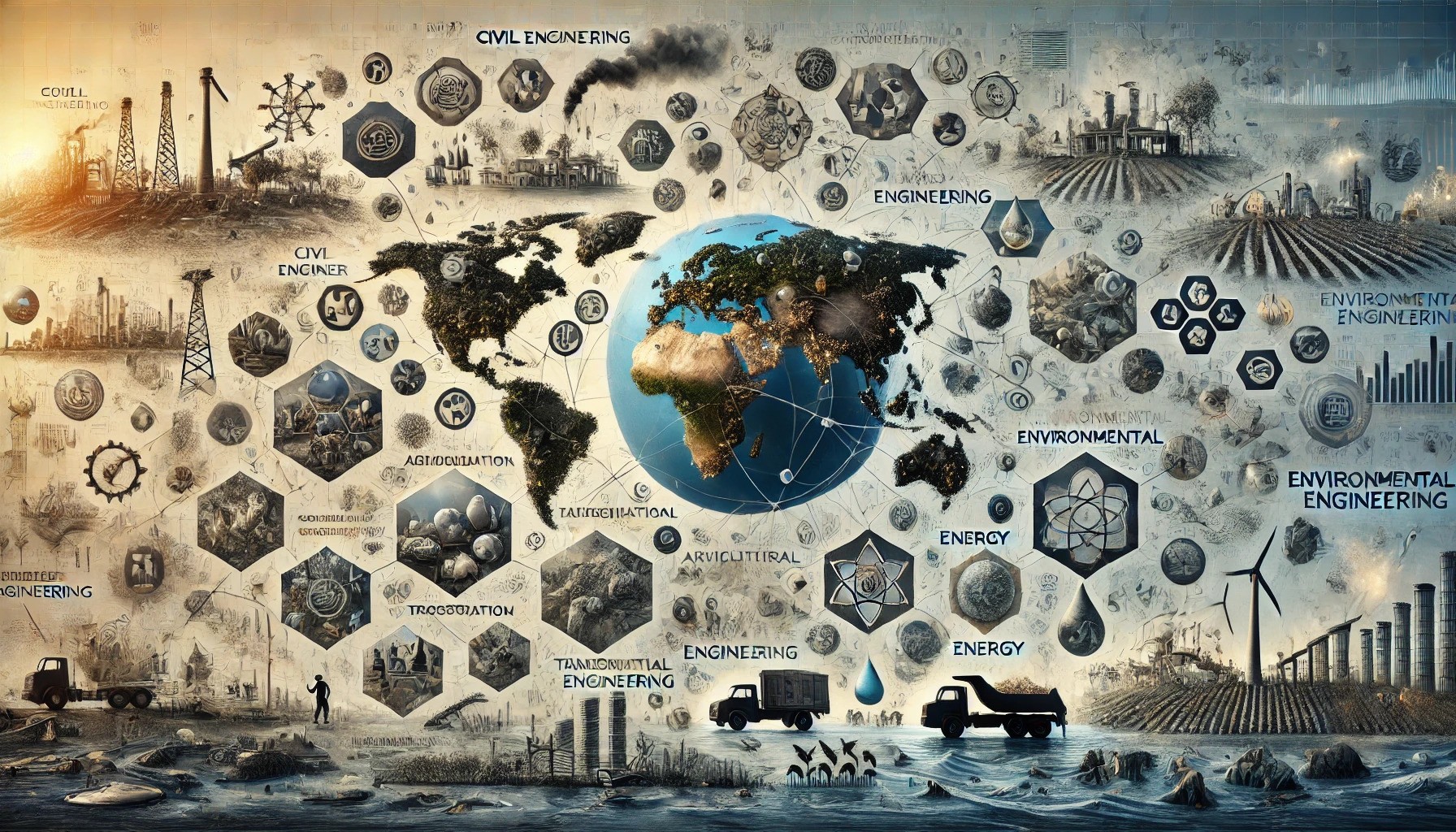
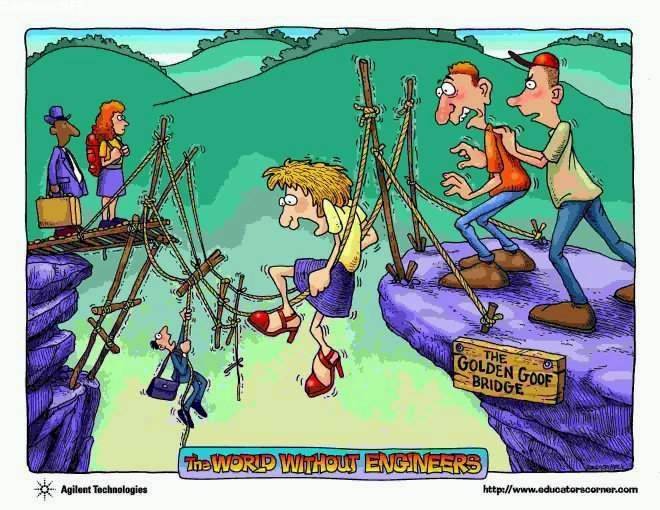

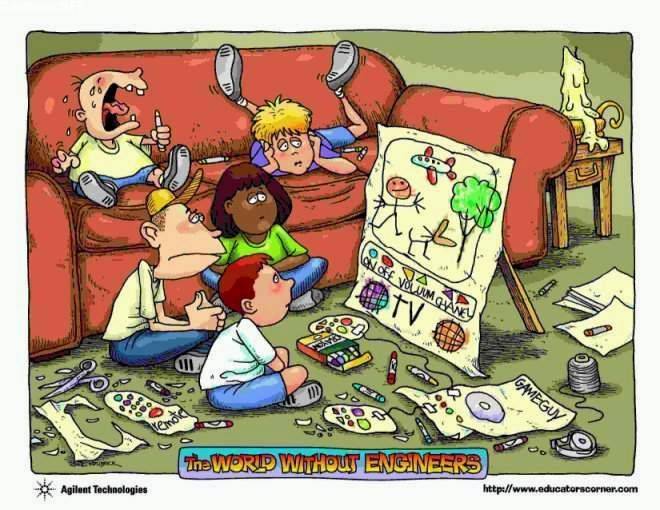
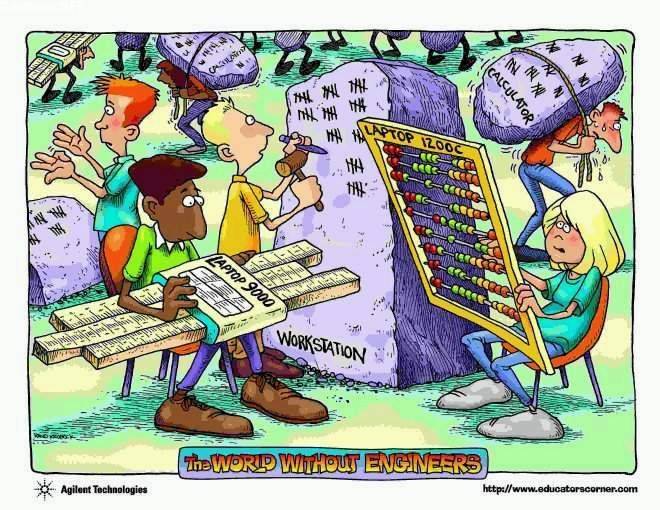
.jpeg)
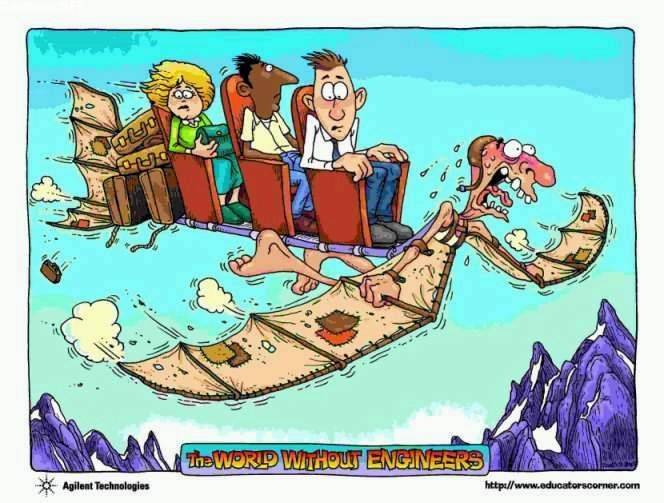
.jpeg)
.jpeg)

.jpeg)


.jpeg)
